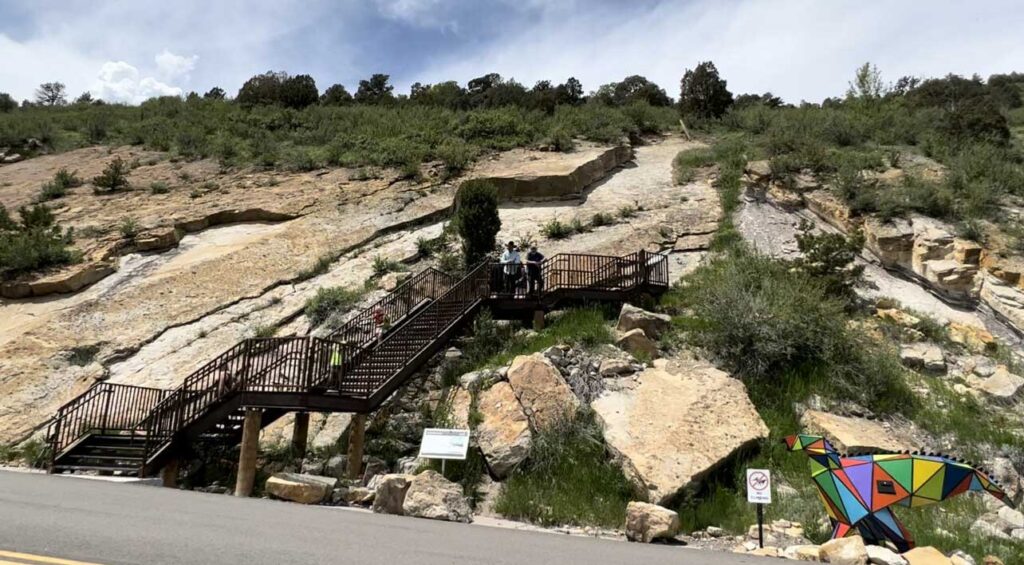
Crocodiles … in a landlocked state now famed for its soaring Rocky Mountains? Believe it. Dinosaur Ridge, a prehistoric site in Morrison, Colo., has renamed a long-gone sandstone bed “Crocodile Creek” and is inviting visitors to explore the attraction.
Crocodiles are now only found in South Florida in the United States, where they are protected because they are a threatened species. Crocs that originally inhabited Colorado were smaller than Florida’s fully grown crocs, which may grow up to 20 feet long.
According to the largest traces, the larger Colorado crocs were 13 to 16 feet long.
A recently constructed stairs and viewing platform, as well as a paved path with informative signage authored by paleontologists, is the latest unlikely attraction in the Colorado town.
Related: What’s the Difference Between an Alligator and a Crocodile?
Crocodile Creek, which has raised to an elevation of 6,000 feet, offers a particularly good example of a crocodile habitat at sea level. Freshwater poured through this bed more than 90 million years ago into what was then the coastline of a sizable internal seaway. There are a lot of fossilized animal tracks in the stone layers of today, including many parallel claw marks.
“Crocodile tracks are one of the most common tracks in the Dinosaur Ridge area, and in the Cretaceous-age Dakota Sandstone generally,” said Dr. Martin Lockley, co-founder of the nonprofit Friends of Dinosaur Ridge, and world-renowned ichnologist and professor emeritus at University of Colorado Denver
“Crocs had four toes on their hind feet, but often we see only the traces of the three longest toes,” Dr. Lockley noted. “Often swim tracks are aligned in one direction because crocs were following a creek or moving with a current.” The world’s first fossilized crocodile tracks ever scientifically named were found near Golden, Colorado in the 1930s.
Visitors can observe proof of a dinosaur lek, where mating rituals similar to those of some contemporary birds left theropod scratch marks in Cretaceous mud, just south of Croc Creek.









